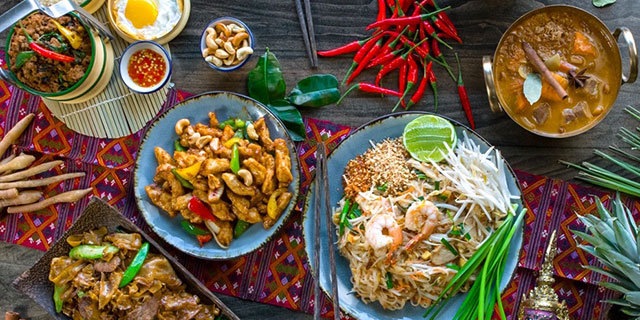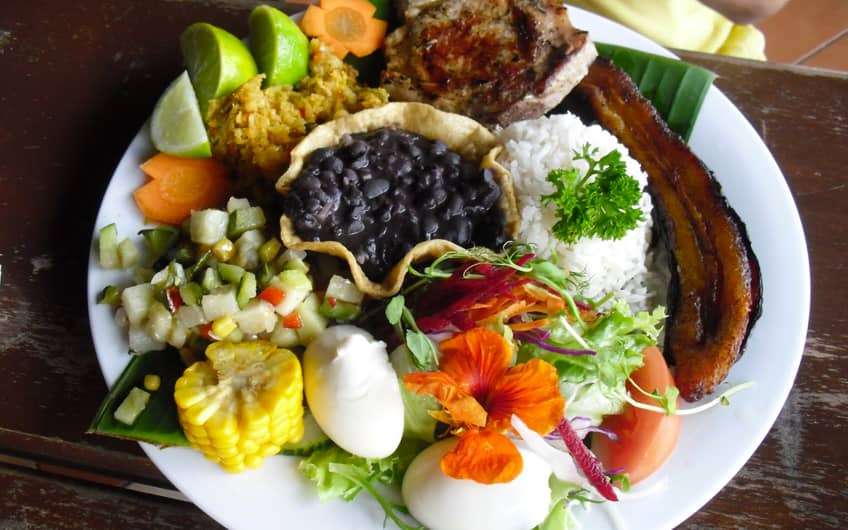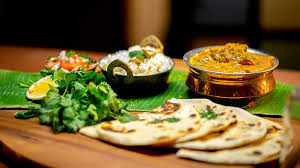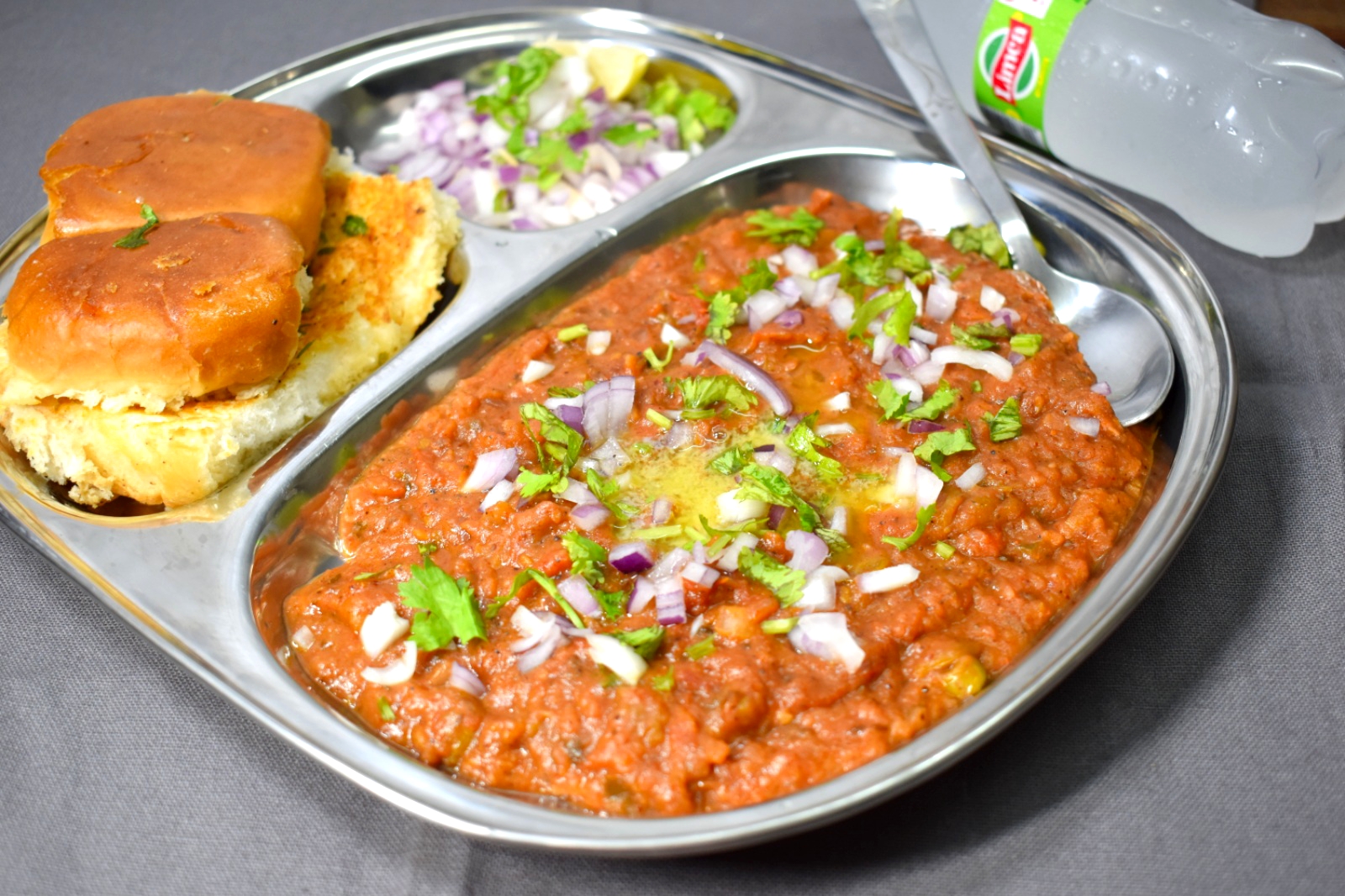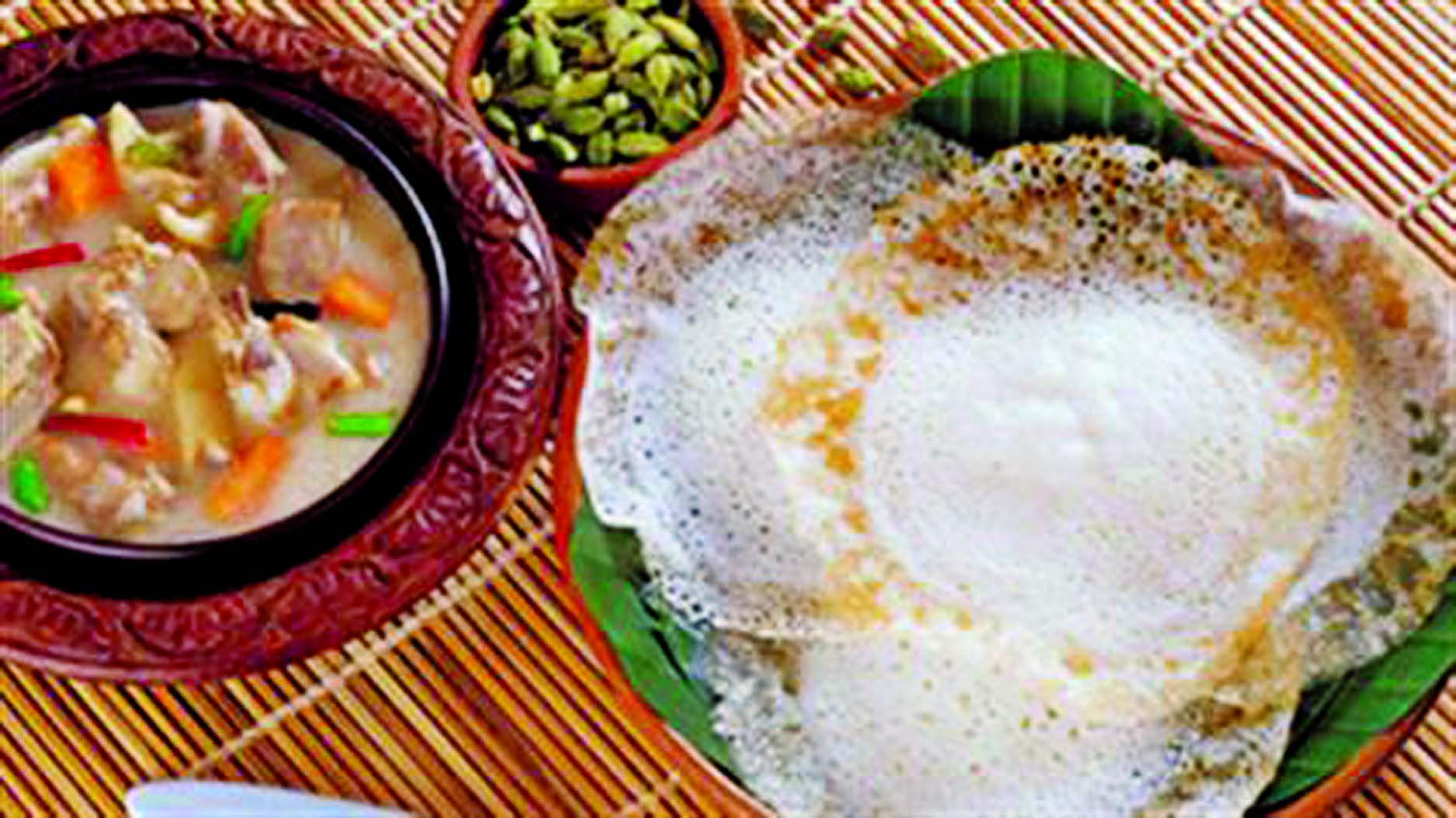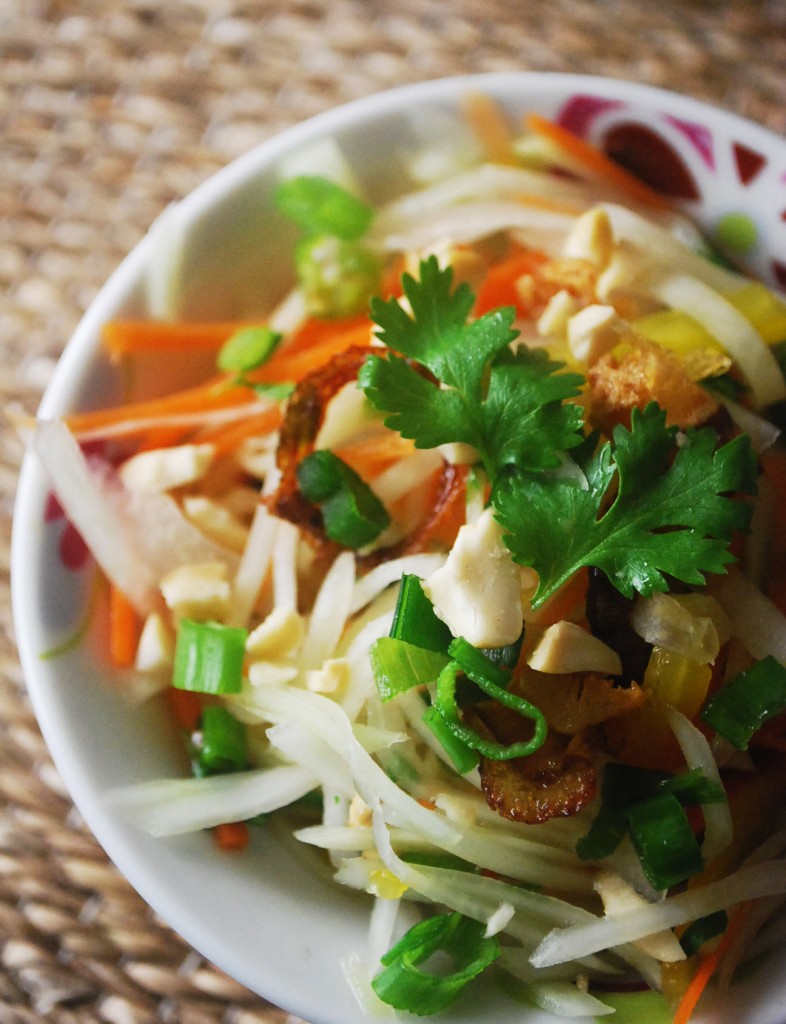
Thai cuisine is essentially a marriage of centuries-old Eastern and Western influences harmoniously combined into something uniquely Thai. Originally, Thai cooking reflected the characteristics of a waterborne lifestyle, aquatic animals, plants and herbs were major ingredients. Large chunks of meat were eschewed. Subsequent influences introduced the use of sizeable chunks to Thai cooking.
With their Buddhist background, Thais shunned the use of large animals in big chunks. Big cuts of meat were shredded and laced with herbs and spices. Traditional Thai cooking methods were stewing and baking or grilling. Chinese influences saw the introduction of frying, stir frying and deep-frying. Culinary influences from the 17th century onwards included Portuguese, Dutch, French and Japanese. Chillies were introduced to Thai cooking during the late 1600s by Portuguese missionaries.
Thais were very adept at ‘Siamese-icing’ foreign cooking methods, and substituting ingredients. The ghee used in Indian cooking was replaced by coconut oil, and coconut milk substituted for other dairy products. Overpowering pure spices were toned down and enhanced by fresh herbs such as lemon grass and galanga. Eventually, fewer and less spices were used in Thai curries, while the use of fresh herbs increased. It is generally acknowledged that Thai curries burn intensely, but briefly. Instead of serving dishes in courses, a Thai meal is served all at once, permitting dinners to enjoy complementary combinations of different tastes.
Ideally, eating Thai food is a communal affair involving two or more people, principally because the greater the number of diners the greater the number of dishes ordered. A proper Thai meal should consist of a soup, a curry dish with condiments, a dip with accompanying fish and vegetables. A spiced salad may replace the curry dish. The soup can also be spicy, but the curry should be replaced by non-spiced items. This would be followed by sweet desserts or fresh fruits such as mangoes, durian, jackfruit, papaya, grapes or melon. The ideal Thai meal is a harmonious blend of the spicy, the subtle, the sweet and sour, and is meant to be equally satisfying to eye, nose and palate.
Some of the must have dishes in Thailand are:
Thai Soups – have different variations like:
Tom Yam Kai (spicy chicken soup) is a clear chicken soup seasoned with a blend of chili, lime and fish sauce. The broth is simmered with Thai herbs as lemon grass, shallot and galangal which give it a unique and satiating aroma.
Tom Yam Kai (chicken in coconut milk soup) is a coconut milk based soup prepared with many types of Thai herbs that makes this soup unique. Though the soup is seasoned with chili, lime and fish sauce and is less spicy.
Tom Yam Goong (spicy shrimp soup) is truly one of a kind with its fierce spiciness and sourness and a blatant use of fragrant herbs including galangal, lemon grass, kaffir lime leaves, shallot, tamarind and chili pepper. There are two styles of Tom Yam; the clear spicy soup and thick spicy soup. The latter is cooked by adding coconut milk or milk to the broth in order to thicken the stock and give the dish a milder flavor. Tom Yam is very versatile and can be made with prawns, chicken, fish and mix of seafood, and mushroom. Tom Yam Goong is the most popular variety of Tom Yam since Spicy Shrimp Soup is the original.
Som Tam: (spicy papaya salad) is one of the most popular foods among Thai people for its fiercely spicy and sour flavors. Som Tam, which literally means “Sour Pounded”, is a spicy salad made from a mix of fresh vegetables including shredded unripen papaya, yardlong beans and tomato. Som Tam is unique that the spicy dressing and salad vegetables are pounded and mixed in the mortar using a pestle. Som Tam is usually served with grilled chicken and sticky rice.
Thai curries: have a unique blend of spices and herbs:
Kang Kiew Wan (green chicken curry), literally translated as “Sweet Green Curry”, is nicely sweet and slightly spicy and tastes very delightful with a proper blend of the spiciness from green curry chili paste, blandness from coconut milk, sweetness of sugar and saltiness of fish sauce. It is usually eaten with steamed rice or served as a sauce to rice noodle known as “Kanom Jeen” a more ‘spaghetti-like’ noodle.
Panaeng (meat in spicy coconut cream) can be cooked using either pork, chicken or beef. Panaeng tastes like Thai red curry but the coconut milk sauce is thicker and richer. Compared to Thai red curry, Panaeng is mildly spicy and sweet. Paneang is best served with warm steamed rice.
Gnag Massaman (chicken curry) is a sweet curry that originates from Southern Thailand as a Halal dish. The curry sauce is a mixture of curry paste, coconut milk, a strong flavor of peanuts, and a hint of nutmeg and cinnamon. Massaman is usually pre-made with chicken and a few chunks of potatoes.
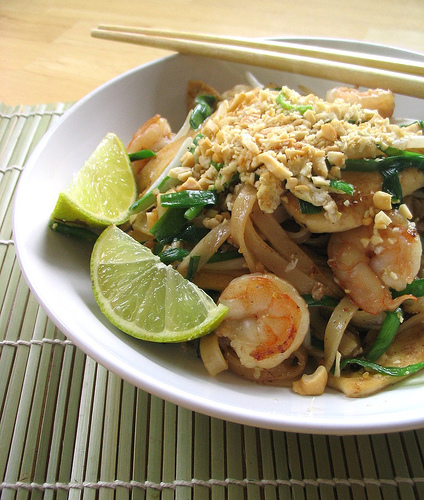
Pad Thai (Fried Noodle) This national dish prides itself for its long history traced back in previous centuries. The stir-fried noodle has become popular because it tastes yummy and is served with a variety of seasonings to suit your tastes. Through history, Pad Thai has evolved into two different styles: the classic and the variation. The classic Pad Thai is a stir-fried noodle with eggs, fish sauce, tamarind juice, red chili pepper plus bean sprouts, shrimp and tofu and garnished with crushed peanuts and coriander while another style is relatively dry and lightly-flavored. The latter is easily found in street vendors and dominant in Thai restaurants in the West but having classic Pad Thai freshly cooked in country of origin is the way to go.
Thai sweets: (Kanom Thai) have unique, colorful appearance and distinct flavors. The art of Thai desserts have been passed down through the generations. Thai desserts are made of three principle ingredients: flour, sugar, and coconut (eggs were later introduced by Portuguese traders). Despite these simple components, Thai desserts can require sophisticated skills, requiring time and care in their preparation. Thai desserts have vibrant variety of colors and sweet fragrances, which are acquired from aromatic flowers.
Kao Niaw Ma-Muang (sweet sticky rice with ripe mango and coconut cream) this tantalizing dessert deserves the king of Thai sweets. Kao Niaw Ma-Muang is prepared by steaming Thai glutinous rice in rich coconut milk and syrup.
Thong Yib and Thong Yod (yolk-egg golden pinch and golden droplets) Thong Yib and Thong Yod are always served together since they look and taste alike. The only difference between these two sweets is their shapes which result from how they are formed. Thong Yod yolk mixture is dropped into boiling thick syrup and that creates such a droplet of yellow yolk sweets while Thong Yib is put in a small cup.
Thailand has its own varieties of drinks like Thai beers, liquors and Thai wines. For coffee lovers try some Thai iced coffee (kah-feh yen) made with coffee, cream, sweetener and spices.
Thailand has a variety of dried chips fruit or vegetable based, curry pastes and some local pots to bring back home.
To get more information & assistance, please submit the form below and our specialist will get in touch with you at the earliest.

